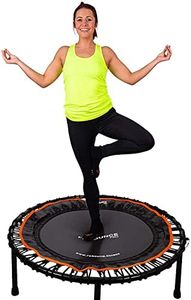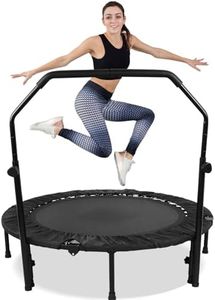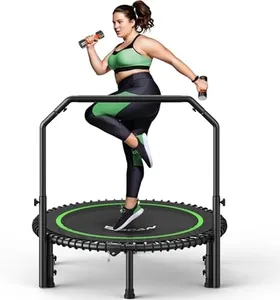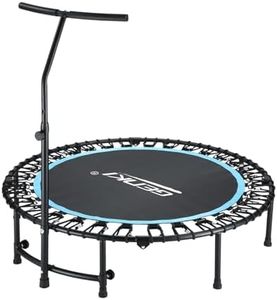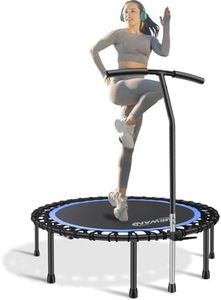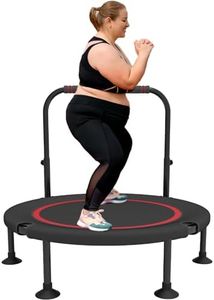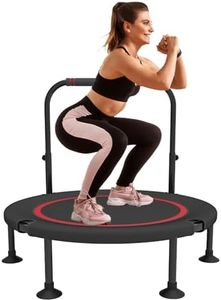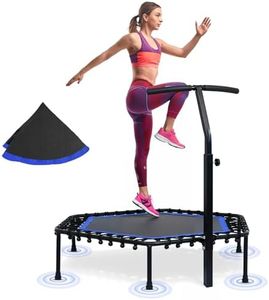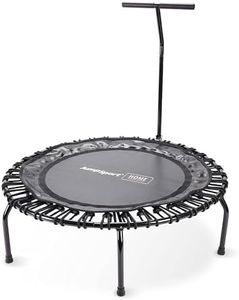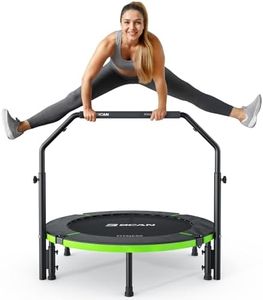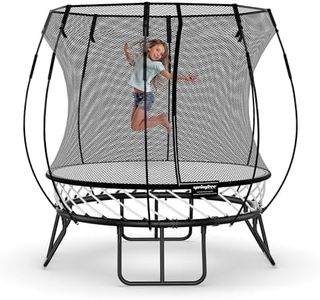We Use CookiesWe use cookies to enhance the security, performance,
functionality and for analytical and promotional activities. By continuing to browse this site you
are agreeing to our privacy policy
10 Best Mini Trampolines
From leading brands and best sellers available on the web.Buying Guide for the Best Mini Trampolines
Mini-trampolines, sometimes called rebounders, are great for indoor workouts, rehabilitation, or just for a fun low-impact activity. Choosing the right mini-trampoline means thinking about how you’ll use it, who will be using it, and where you’ll put it. It’s also important to pay attention to safety and durability, especially since repetitive jumping can put stress on the trampoline’s parts. Understanding the main features will help you select one that fits your space, comfort, and exercise goals.Weight CapacityWeight capacity shows the maximum user weight the trampoline can handle safely. It’s important because exceeding this limit can cause the trampoline to wear out quicker or even break, posing a safety risk. Mini-trampolines often range from about 200 to over 400 pounds in weight capacity. For children or light adults, lower capacities are usually fine. For heavier users or for shared family use, choosing a higher weight capacity ensures long-term durability and safer bouncing. Always pick a trampoline that supports the heaviest person who will use it.
Mat Size (Diameter)The mat size refers to the usable jumping area, usually measured as the diameter of the trampoline. A smaller mat (around 32–38 inches) makes the trampoline more compact and easier to store, but offers less space for movement. Larger mats (40–48 inches or more) provide more room for exercise routines and comfort but require more floor space. Choose the size based on available space in your home and the type of exercises you want to do. If you plan to do more than just simple jumping, a larger area can feel safer and more comfortable.
Bounce Type (Spring vs. Bungee)Bounce type describes what supports the mat: metal springs or bungee cords. Spring-based trampolines provide a firmer, sometimes noisier bounce, which some users prefer for quick, energetic workouts. Bungee cord trampolines usually offer a quieter, gentler, and smoother bounce, making them popular for joint-friendly exercise and low-impact use. If you need a softer, low-noise experience—such as for apartments or knee rehabilitation—bungee is usually the way to go. For high-energy routines, springs can deliver more rebound and are often more budget-friendly.
Frame Stability and ConstructionFrame stability and construction refer to the strength and design of the trampoline’s supporting frame. Sturdy frames are typically made of steel and can come with extra stability features like rubberized feet or additional support legs. Stability is key for safe exercise, especially for fitness routines that involve lateral movement. Heavier or thicker frames are steadier but may be harder to move around. If you need to transport or store the trampoline often, look for one with a foldable frame. For regular or vigorous use, prioritize a solid, stable build.
Safety FeaturesSafety features can include padded edges, non-slip mats, and optional stability bars. Padding protects you from hard parts of the frame and springs or cords. Bars can help beginners or rehabilitating users maintain balance. Non-slip mats reduce the risk of slipping, especially with shoes off. Choose safety features according to who will use the trampoline—children, seniors, or those in physiotherapy will benefit more from added protective features. For experienced and confident users, minimal safety additions may be sufficient.
